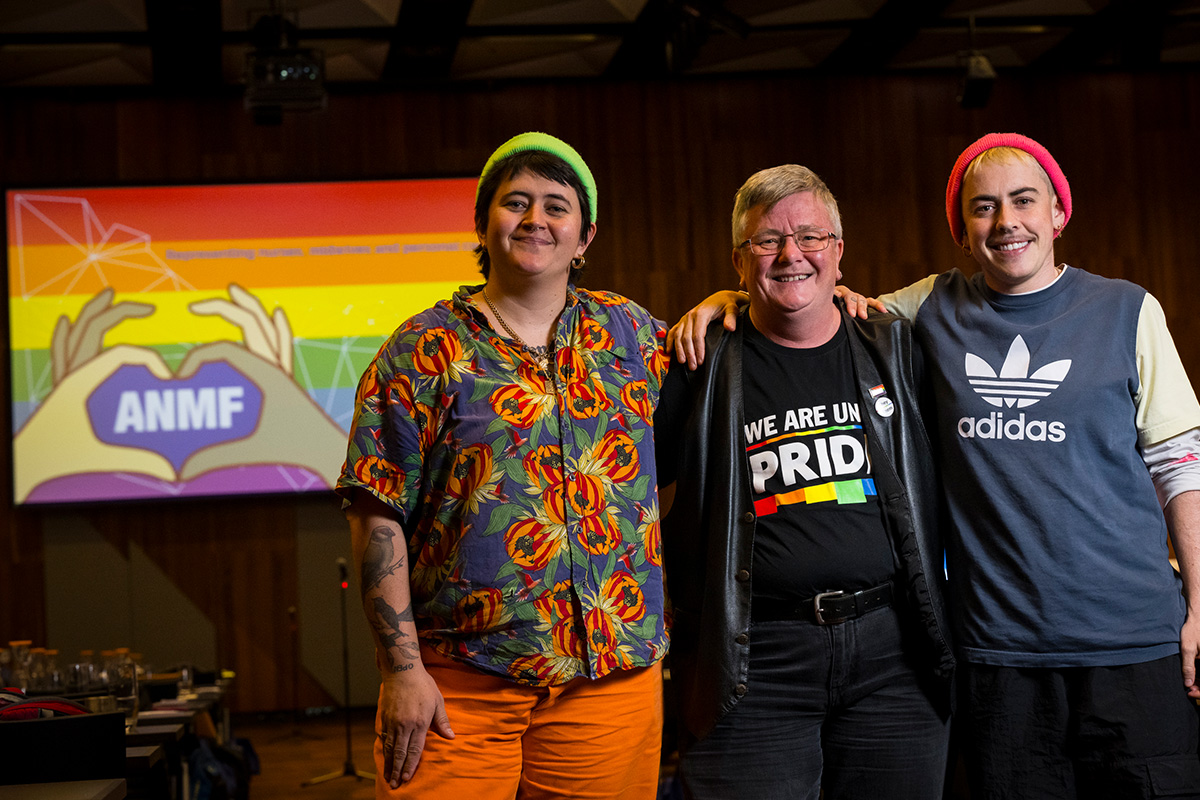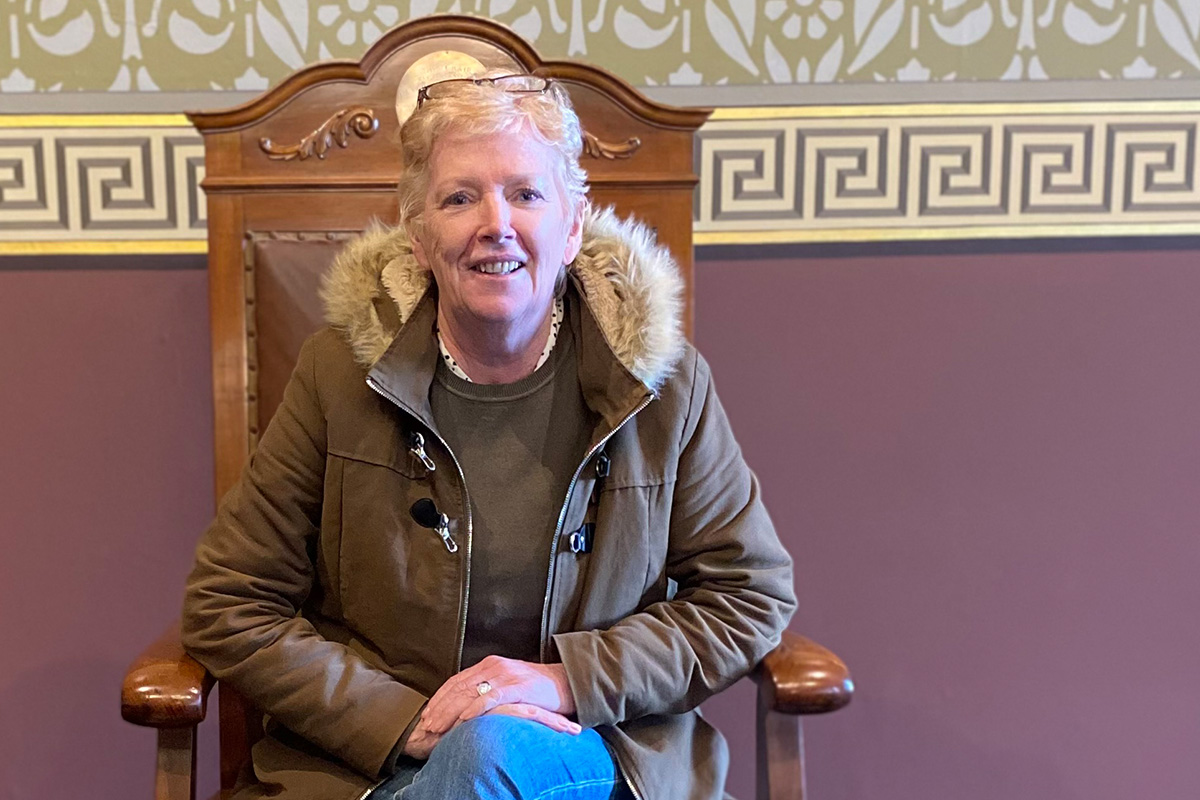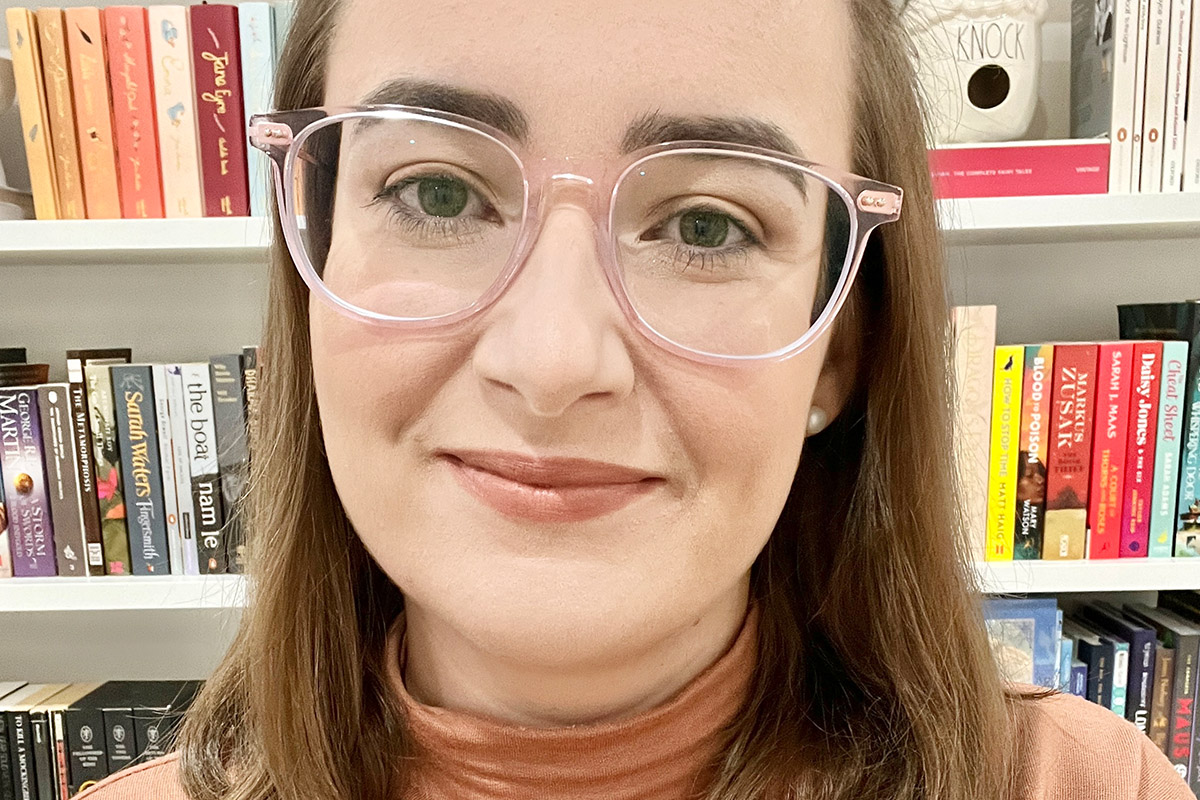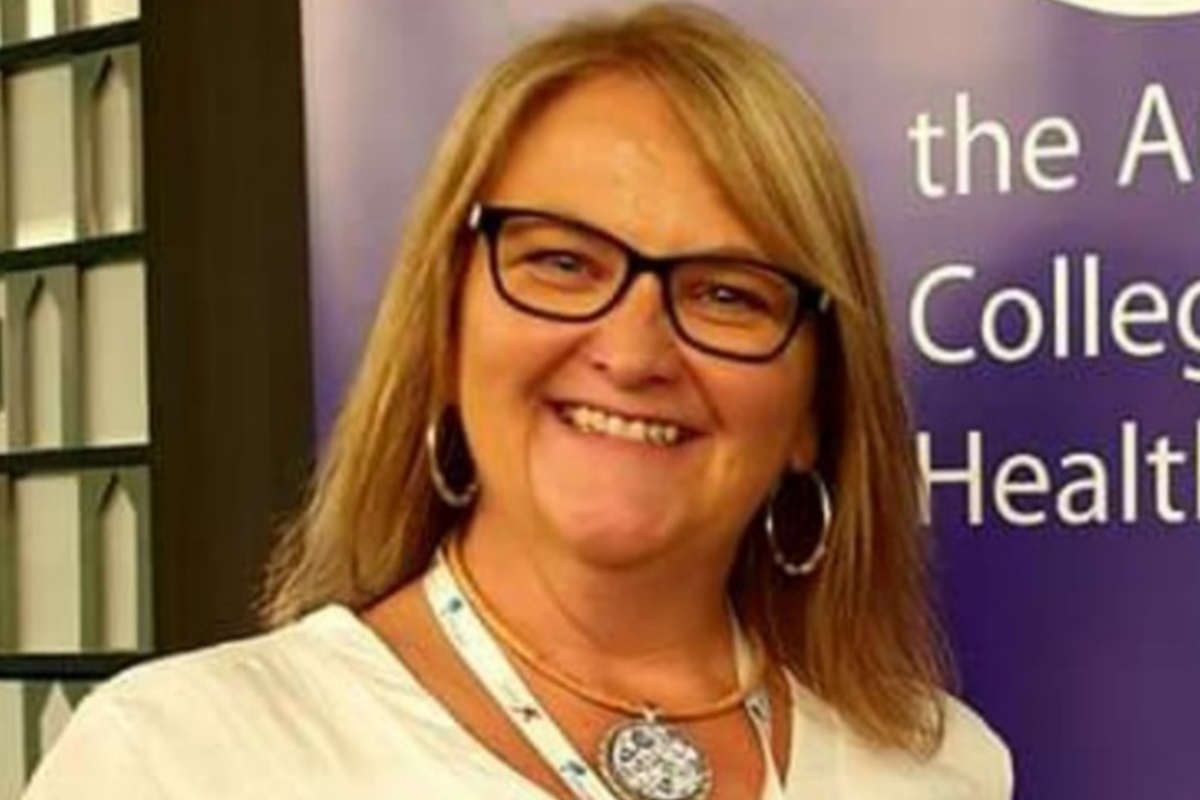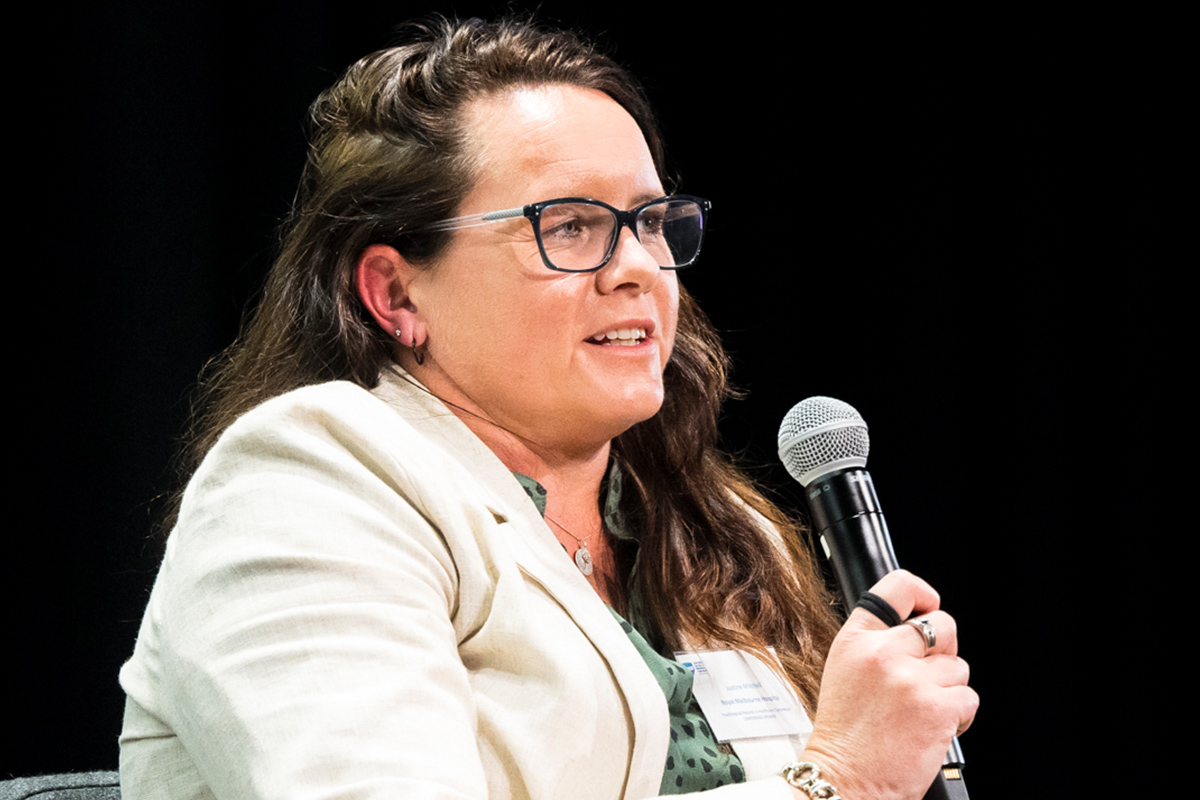
Justine Mitchell speaking at the November 2022 Psychological Hazards in Healthcare Conference. Photo: Chris Hopkins
Presenting at the ANMF (Vic Branch) Psychological Hazards in Healthcare Conference in November, Justine Mitchell deadpanned that ‘there is no silver bullet for occupational violence and aggression – so what we’re constantly asking is what we can do differently. Have we thought of this, have we thought of that?’
An RN with a background in clinical trauma and orthopaedic nursing, Justine has worked at Royal Melbourne Hospital for around 25 years. For the past decade, she has been focused on clinical aggression training and education, and has spent a significant part of that time running Management of Clinical Aggression (MOCA) training.
It was while working with ANMF on implementing the Branch’s 10-point plan to end violence and aggression that Justine and her colleagues established what they call a consultancy model approach to the issue of occupational violence and aggression (OVA).
A consultancy model
‘We had built a robust hospital-based program around clinical aggression training,’ she explained at the conference, ‘and then we went: now what do we do? We haven’t fixed it. OVA’s still here. So we knew that we wanted to try something different, and what we came up with was a consultancy model.’
This model, which began its roll out at Royal Melbourne Hospital in 2020, started as a staff consulting model around code grey attendance, Justine explains, with the aim of supporting staff post-incident. It soon expanded to support staff to do proactive risk assessments and look for preventative measures to help manage clinical aggression.
‘Our approach is trying to at least prevent further serious incidents happening regularly.’
‘In a large organisation like ours, it’s easy to stay in that post-incident response model, and you can imagine we have so many different incidents,’ Justine explains. ‘But even if prevention wasn’t done before the first incident, our approach is trying to at least prevent further serious incidents happening regularly.’
The model works like real-time coaching and mentoring while staff are actually caring for a patient who might be causing concern or displaying behaviours of concern. ‘It’s always previously been about training, training, training,’ Justine says. ‘Whereas this is really trying to think outside the square, looking at different avenues rather than how we’ve always done it in the past.’
This is not to say the current model doesn’t involve formal training and education. It does. But the significant difference is that it involves ‘bringing the education to the staff rather than waiting for them to come to us’.
Initial results and feedback have been good, though Justine admits it’s tricky to evaluate at this stage. ‘We’re looking at how we evaluate it,’ she says. ‘One of the things that we look at the most is the increased reporting. It’s almost like a backward reversal: the numbers imply that the culture of reporting has improved, which means that the numbers have gone up, if we’re looking at incident data.’
But in general, the model has been well received, with staff feedback suggesting that the level of support they feel has been much greater ‘because there’s the ability to have the discussion, and it’s an avenue for escalation if required’.
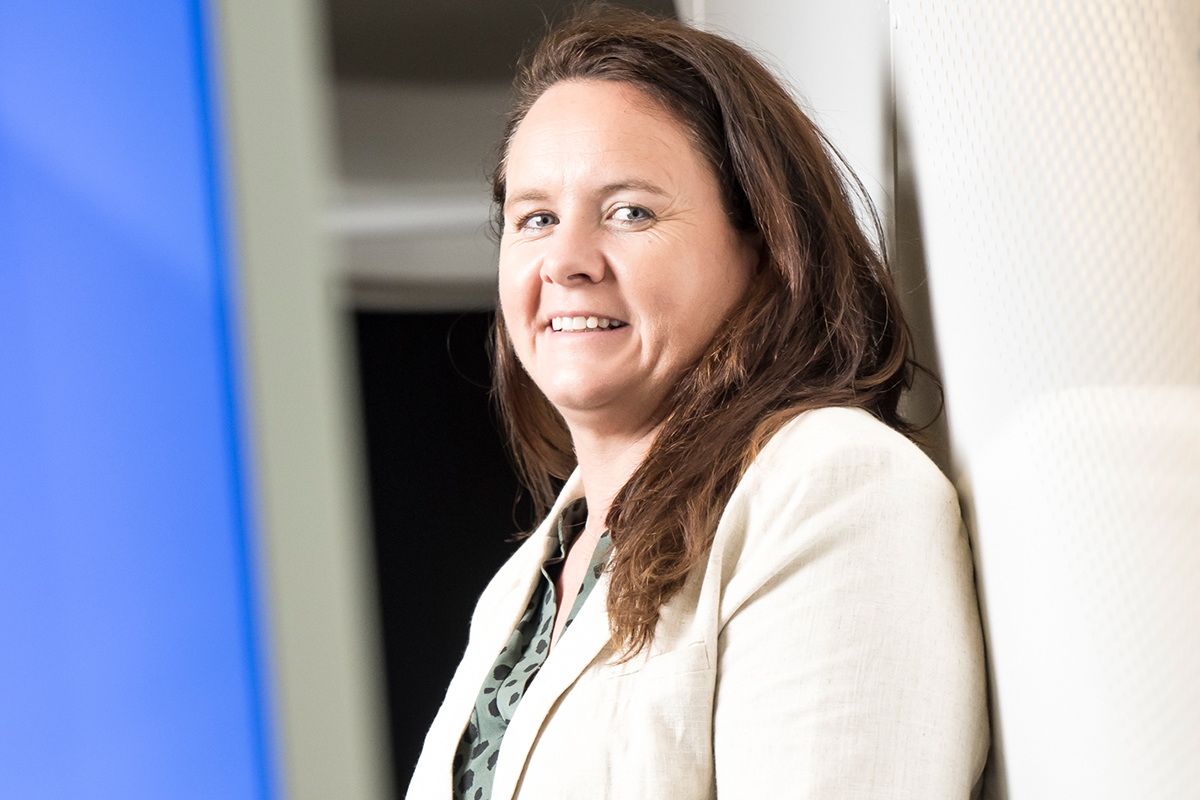
Justine Mitchell. Photo: Chris Hopkins
Climbing a mountain
Justine recently moved back to the floor after managing the team for several years. Her decision was ‘perhaps a slightly selfish’ one she says, but the demands of managing the service and team during the past couple of years were tough – especially while also trying to maintain work-life balance with three young boys at home.
‘I’m back to working as a consultant on the floor again, which is a really nice change for me. Two and a half years managing a team where we constantly felt like we were grappling with short staff and COVID was pretty draining. Especially this team, because we see the worst of the worst of patient behaviour.’
This psychological effect on team members is something Justine is acutely aware of. ‘We talk about how we support ourselves to make sure that that cumulative psychological effect is not harming us,’ she says. ‘Sometimes it feels like a mountain that we’re never going to climb, but I came away from the conference realising we have to do more.’
Ultimately what keeps Justine going is her love for nursing and public health, and the knowledge that she is working towards a system in which you can have both staff safety and patient safety. ‘We all started our careers without this support, so knowing that this has changed certainly keeps us going.’
